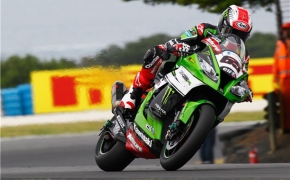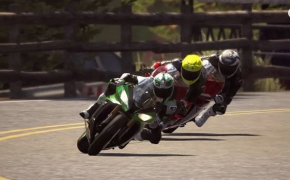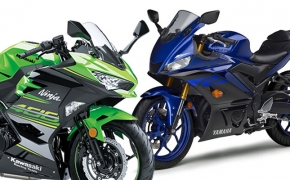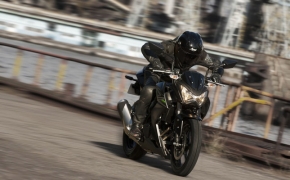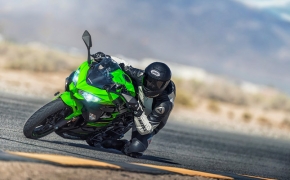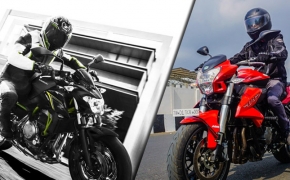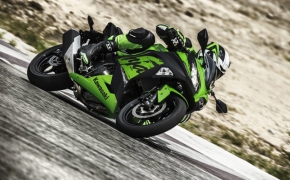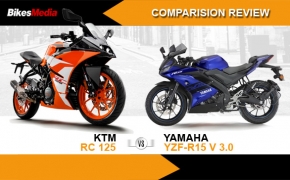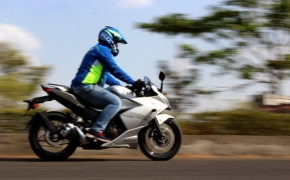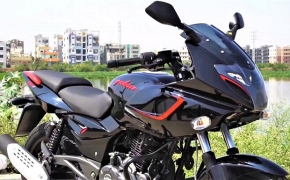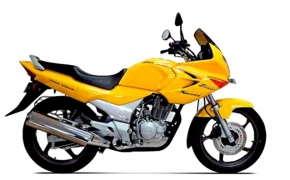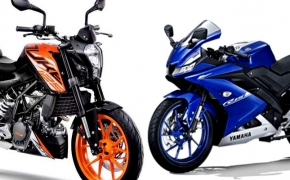Crouch, according to the English dictionary is defined as “a position where the knees are bent and the upper body is brought forward and down, typically in order to defend oneself.” Now, that you know what crouching means, it is of paramount importance that you understand why it is needed in the first place. And, being a biker, you must know what a fairing is too.
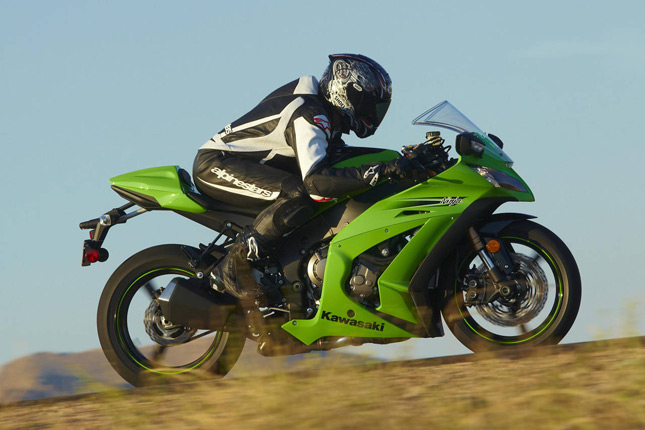 A fairing is any structure whose primary function is to produce a smooth outline and reduce air/aerodynamic drag. Fairings are placed on motorcycles with the primary purpose to reduce drag. Also, to protect you, the rider from airborne hazards and wind – induced hypothermia (IMPORTANT STUFF, more on that later). There may be a front fairing, as well as a rear fairing component. A motorcycle windshield may be an integral part of the fairing.
A fairing is any structure whose primary function is to produce a smooth outline and reduce air/aerodynamic drag. Fairings are placed on motorcycles with the primary purpose to reduce drag. Also, to protect you, the rider from airborne hazards and wind – induced hypothermia (IMPORTANT STUFF, more on that later). There may be a front fairing, as well as a rear fairing component. A motorcycle windshield may be an integral part of the fairing.
The effects of aerodynamic drag on motorcycles are very significant. To reduce drag, streamlining is done. A streamline is a line along which the flow of a moving fluid is very smooth / least turbulent.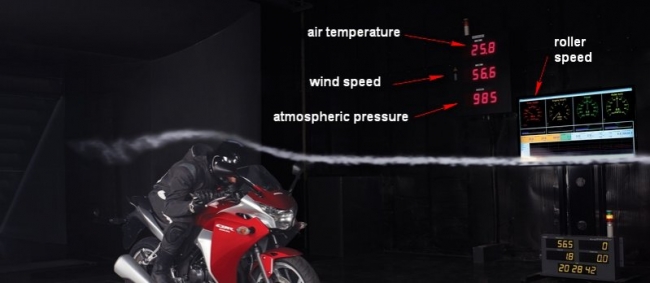 Air in motion will restrict an object more which has a rough and disorderly shape (headlight, instrument cluster assembly of a bike, bus, truck, etc.) But it will flow much easily through a streamlined shape like a motorcycle fairing (think Hayabusa, R15, Ninja, CBR, Japanese high speed trains, airplanes and the like). Crouching helps to reduce drag resistance and helps the motorcycle achieve higher speeds than in a non – crouch position. Hence, naked versions of sport bikes are almost always slower than their faired versions. Though you can still crouch, they won`t be able to achieve as high speeds due to their non - faired design. Plus, you`ll experience much greater wind blast !
Air in motion will restrict an object more which has a rough and disorderly shape (headlight, instrument cluster assembly of a bike, bus, truck, etc.) But it will flow much easily through a streamlined shape like a motorcycle fairing (think Hayabusa, R15, Ninja, CBR, Japanese high speed trains, airplanes and the like). Crouching helps to reduce drag resistance and helps the motorcycle achieve higher speeds than in a non – crouch position. Hence, naked versions of sport bikes are almost always slower than their faired versions. Though you can still crouch, they won`t be able to achieve as high speeds due to their non - faired design. Plus, you`ll experience much greater wind blast !
 Motorcycles with powerful engines are capable of reaching warp speeds. Let`s just say that were you at those speeds, you wouldn`t even consider looking at the speedometer. And you were thinking of selfies, huh? At such speeds, the air resistance is enough to knock someone off the bike if he/she isn`t holding on tight. If the rider doesn`t crouch at speed it will lead to buffeting and hence he/she will act as a parachute, slowing the bike. You will create more drag if you don`t crouch well down under.
Motorcycles with powerful engines are capable of reaching warp speeds. Let`s just say that were you at those speeds, you wouldn`t even consider looking at the speedometer. And you were thinking of selfies, huh? At such speeds, the air resistance is enough to knock someone off the bike if he/she isn`t holding on tight. If the rider doesn`t crouch at speed it will lead to buffeting and hence he/she will act as a parachute, slowing the bike. You will create more drag if you don`t crouch well down under.
The Suzuki Hayabusa, when it was launched, was considered the benchmark of aerodynamic bodywork. It had immense stability even at 280 km+ speeds.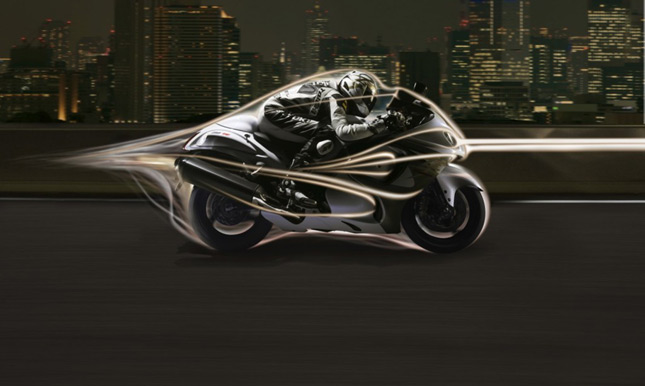 Some lesser known advantages of fairings:
Some lesser known advantages of fairings:
* Fairing may carry headlights, instruments, and other items. Get this, if the fairing is mounted on the frame (like most superbikes), mounting equipment on the fairing reduces the weight and rotational inertia of the steering assembly, improving the handling !
* Improve fuel economy as the bike is more streamlined than it`s naked siblings. Speed as well as fuel economy, wow !
Wind Chill Factor
Wind chill factor is the decrease in air temperature felt by the body due to the flow of air. The normal body temperature is 98.6°F. Hypothermia is defined as a core body temperature of below 35.0 °C (95.0 °F). The treatment of mild hypothermia involves: warm drinks, warm clothing and staying active (keep moving around or take frequent brakes while riding). It classically occurs from extreme exposure to cold, as when you are riding constantly for longer durations in winters.
During winters, while riding a bike, the effective temperature felt by the rider will always be less than the actual ambient temperature. Take for example, in Delhi, on a 9°C cold winter day you are riding your bike, at a constant 75-80 km/h. The actual temperature felt by your body will be around 3-4°C (calculated using wind chill factor calculator). It depends on the vehicle speed and ambient temperature. Bright sunshine will definitely increase the temperature, but, bear in mind that warmer clothing is much more important for a biker than the pedestrians. And of course, I know how cool it feels when you get off the bike and feel normal compared to others ! Others will shiver, but not you. Motorcycling things ! Only a biker will understand.
By: Vikram Malhotra
 A fairing is any structure whose primary function is to produce a smooth outline and reduce air/aerodynamic drag. Fairings are placed on motorcycles with the primary purpose to reduce drag. Also, to protect you, the rider from airborne hazards and wind – induced hypothermia (IMPORTANT STUFF, more on that later). There may be a front fairing, as well as a rear fairing component. A motorcycle windshield may be an integral part of the fairing.
A fairing is any structure whose primary function is to produce a smooth outline and reduce air/aerodynamic drag. Fairings are placed on motorcycles with the primary purpose to reduce drag. Also, to protect you, the rider from airborne hazards and wind – induced hypothermia (IMPORTANT STUFF, more on that later). There may be a front fairing, as well as a rear fairing component. A motorcycle windshield may be an integral part of the fairing.The effects of aerodynamic drag on motorcycles are very significant. To reduce drag, streamlining is done. A streamline is a line along which the flow of a moving fluid is very smooth / least turbulent.
 Air in motion will restrict an object more which has a rough and disorderly shape (headlight, instrument cluster assembly of a bike, bus, truck, etc.) But it will flow much easily through a streamlined shape like a motorcycle fairing (think Hayabusa, R15, Ninja, CBR, Japanese high speed trains, airplanes and the like). Crouching helps to reduce drag resistance and helps the motorcycle achieve higher speeds than in a non – crouch position. Hence, naked versions of sport bikes are almost always slower than their faired versions. Though you can still crouch, they won`t be able to achieve as high speeds due to their non - faired design. Plus, you`ll experience much greater wind blast !
Air in motion will restrict an object more which has a rough and disorderly shape (headlight, instrument cluster assembly of a bike, bus, truck, etc.) But it will flow much easily through a streamlined shape like a motorcycle fairing (think Hayabusa, R15, Ninja, CBR, Japanese high speed trains, airplanes and the like). Crouching helps to reduce drag resistance and helps the motorcycle achieve higher speeds than in a non – crouch position. Hence, naked versions of sport bikes are almost always slower than their faired versions. Though you can still crouch, they won`t be able to achieve as high speeds due to their non - faired design. Plus, you`ll experience much greater wind blast !
 Motorcycles with powerful engines are capable of reaching warp speeds. Let`s just say that were you at those speeds, you wouldn`t even consider looking at the speedometer. And you were thinking of selfies, huh? At such speeds, the air resistance is enough to knock someone off the bike if he/she isn`t holding on tight. If the rider doesn`t crouch at speed it will lead to buffeting and hence he/she will act as a parachute, slowing the bike. You will create more drag if you don`t crouch well down under.
Motorcycles with powerful engines are capable of reaching warp speeds. Let`s just say that were you at those speeds, you wouldn`t even consider looking at the speedometer. And you were thinking of selfies, huh? At such speeds, the air resistance is enough to knock someone off the bike if he/she isn`t holding on tight. If the rider doesn`t crouch at speed it will lead to buffeting and hence he/she will act as a parachute, slowing the bike. You will create more drag if you don`t crouch well down under.The Suzuki Hayabusa, when it was launched, was considered the benchmark of aerodynamic bodywork. It had immense stability even at 280 km+ speeds.
 Some lesser known advantages of fairings:
Some lesser known advantages of fairings:* Fairing may carry headlights, instruments, and other items. Get this, if the fairing is mounted on the frame (like most superbikes), mounting equipment on the fairing reduces the weight and rotational inertia of the steering assembly, improving the handling !
* Improve fuel economy as the bike is more streamlined than it`s naked siblings. Speed as well as fuel economy, wow !
Wind Chill Factor
Wind chill factor is the decrease in air temperature felt by the body due to the flow of air. The normal body temperature is 98.6°F. Hypothermia is defined as a core body temperature of below 35.0 °C (95.0 °F). The treatment of mild hypothermia involves: warm drinks, warm clothing and staying active (keep moving around or take frequent brakes while riding). It classically occurs from extreme exposure to cold, as when you are riding constantly for longer durations in winters.
During winters, while riding a bike, the effective temperature felt by the rider will always be less than the actual ambient temperature. Take for example, in Delhi, on a 9°C cold winter day you are riding your bike, at a constant 75-80 km/h. The actual temperature felt by your body will be around 3-4°C (calculated using wind chill factor calculator). It depends on the vehicle speed and ambient temperature. Bright sunshine will definitely increase the temperature, but, bear in mind that warmer clothing is much more important for a biker than the pedestrians. And of course, I know how cool it feels when you get off the bike and feel normal compared to others ! Others will shiver, but not you. Motorcycling things ! Only a biker will understand.
By: Vikram Malhotra












